
views
- Keep your email as concise as possible, but be sure to express gratitude toward the client.
- Include the exact date that your contract terminates with the client, and end with your contact details to leave the door open for future projects.
- Maintain a polite and professional tone—a "goodbye" email isn’t the time to air out any issues you have with the client.
- Ensure your response has proper grammar and formatting.
Email Etiquette

Keep your response short and sweet. Although you want to express gratitude towards the client, be sure to draft your response so it’s skimmable. Most people don’t have the time or energy to read a lengthy email, so write a response that’s 2 body paragraphs at most.
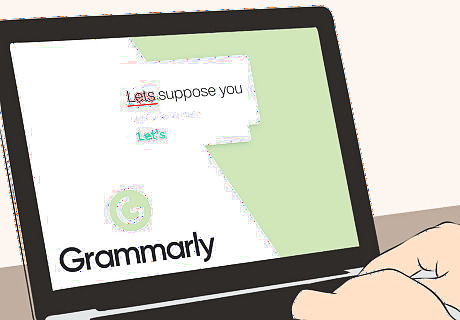
Use proper formatting and grammar. When writing a formal email, avoid using any slang or abbreviations, and make sure there aren’t any spelling errors. Before sending your response to the client, send the email to your own email address to ensure the formatting looks appropriate. If you have time, have someone else proofread the email to ensure it’s error-free, or enable Grammarly on your Google Docs or Microsoft Word.

Maintain a professional tone. Whether the client isn’t satisfied with your services or they no longer need them, keep your response polite and professional. There’s a chance that your client may return to use your services, so say “goodbye” in a graceful and compassionate manner to keep the door open.
What to Include
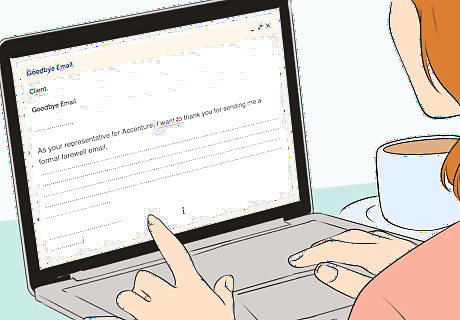
Thank the client for sending their "goodbye" email. Begin your reply by thanking them for taking the time to send their “goodbye” email. The opening line establishes the topic of your email, so you can be simple and concise—save the details for the body of your response. If they’re a bigger client, you may want to mention your company name in the opening line. For example, you could say, “As your representative for Accenture, I want to thank you for sending me a formal farewell email.”

Express appreciation for the opportunity to work with them. Whether you collaborated with the client for months or years, thank them and let them know that you enjoyed working with them throughout the entire process. Expressing gratitude is linked to an increased willingness to help, leaving the door open for future work opportunities. If you accomplished a major goal or project together, briefly describe that achievement and what it meant to your organization. For example, you could say, “It was truly an honor to work with you, and my team will never forget the record-breaking achievements of the Eagle project.” Alternatively, provide a specific quality about the client that you cherish, such as the friendliness of their employees or the promptness of their replies. You could say, “It was an absolute pleasure to work with you, and I will always remember your willingness to collaborate.”
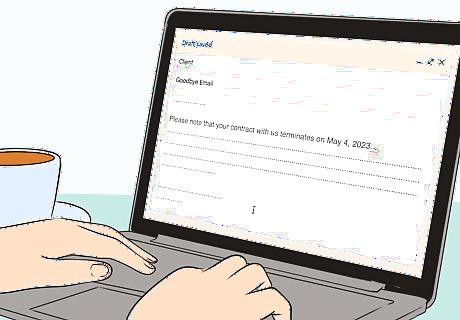
Include the exact date their contract terminates. Most companies require you to include the last day of service as part of their policy, so be sure to clearly state the month, day, and year. To avoid any confusion, place this date at the start of the second body paragraph or in a separate section/block. To directly state the date, you could say, “Please note that your contract with us terminates on May 4, 2023.” You can also embolden the text to draw extra attention to it. If you’ve experienced miscommunication with the client in the past, you may want to request a read receipt through your email provider (or set one up to know if your email was read).
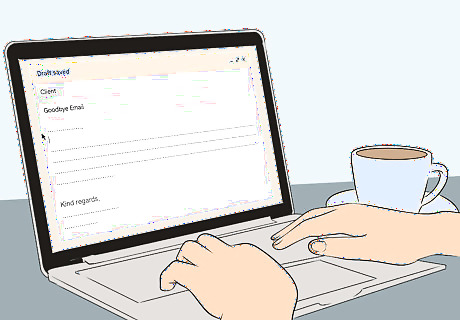
Close with your contact information and a simple salutation. To preserve your relationship with the client, include your name, work address, email, phone number, and fax number (if applicable). Adding this information lets the client know they can reach out to you in the future, especially if there’s an opportunity to work together again. Close your business email with “Wishing you all the best,” “Kind regards,” or “Best wishes” for a warm yet professional salutation. Create a professional email signature for a cleaner look at the end of your response. If your company had a negative experience with the client, you don’t have to add your contact information. However, be sure to ask your boss if it's okay to exclude these details.
What Not to Include

Don’t air out any grievances. A farewell email isn’t the time to raise any issues you have with the client, especially if there’s a chance to work with them in the future. Remember to maintain a professional tone, and keep your response short if you don’t have anything positive to say. If you had a poor relationship with the client, be grateful that you don’t have to work with them for the time being. Instead of confronting the client directly, you can politely ask them to fill out a feedback form. This allows you to find out what went wrong so you can meet the needs of your clients more effectively.

Don’t try to change their decision. In many cases, the person who sent you the farewell email doesn’t have the authority to make the client stay. Instead, say “goodbye” gracefully and express gratitude to end your relationship on good terms.

Don’t offer unsolicited advice. In any industry, unsolicited advice can cause tension, especially if the client doesn’t agree with you. To avoid fostering anger or resentment, keep unnecessary opinions to yourself. Remember that unsolicited advice is usually dismissed, no matter who it comes from. Even if you had a wonderful, long-term relationship with the client, don’t offer any advice unless they specifically ask you for it.

Don’t take it personally. In most cases, leaving is never personal, so don’t take the client’s decision to heart. While it’s easier said than done (especially for long-term clients), try to separate your personal feelings from your work environment. Try to think about the situation in a positive light. If you had a bad relationship with the client, be grateful that you no longer have to work with them. If you had a great experience, reflect on all the wins you shared with the client
Example Email Replies
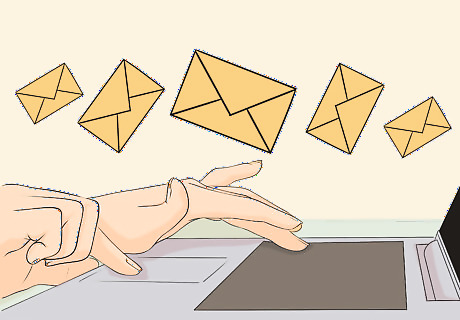
Subject: Re: (Subject of client’s goodbye email) Dear John, As your representative for ArtWorks, I wanted to thank you for sending me your “goodbye” email yesterday. I cannot express how grateful I am to have worked with you over the past two years. Your creativity and willingness to collaborate has truly inspired everyone on my team. I’m sad to see you go, but I wish you the best in all your future endeavors. Please note that your contract with us terminates on May 3, 2023. If you have any questions before or after this date, please feel free to contact me at [email protected] or by phone at (392) 234-2302. Thank you again for your service,Lydia, Project Manager at ArtWorks

Subject: Re: (Subject of client’s goodbye email) Dear Beth, I wanted to thank you for taking the time to send me your “goodbye” email. It has been the highest honor to work with you over the past six months, and everyone at Glossier has enjoyed collaborating with your employees. Although I’m devastated to see you go, I wish you nothing but the best To clarify, our last date of service is March 2, 2023, but please reach out if you have any questions or concerns. If you would like to communicate anytime after this date, please feel free to send me an email at [email protected]. Warm regards, Bob, Managing Director at Glossier, Inc.
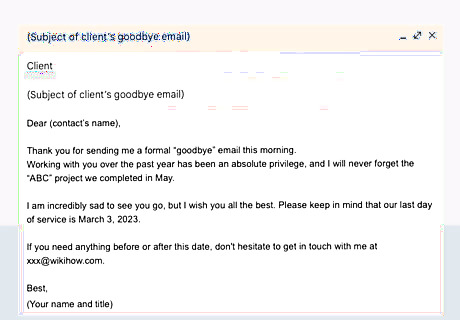
Subject: Re: (Subject of client’s goodbye email) Dear (contact’s name), Thank you for sending me a formal “goodbye” email this morning. It has been an absolute privilege to work with you over the past year, and I will never forget the “ABC” project we completed in May. I am incredibly sad to see you go, but I wish you all the best. Please keep in mind that our last day of service is March 3, 2023. If you need anything before or after this date, please feel free to contact me at [email protected]. Best,(Your name and title)
Revitalizing Your Relationship
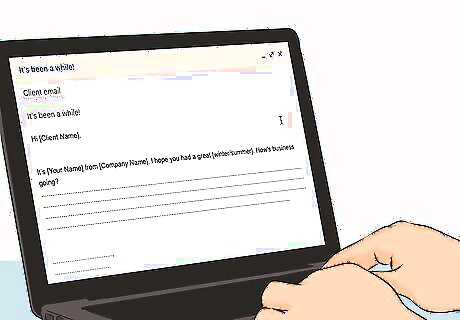
Reopen your dialogue with a personal touchpoint 2-3 months later. Through your customer relationship management tool, check in with the client to see if there’s an opportunity to reconnect. Craft an authentic email by asking them questions about their business, especially if it seems like they’re struggling with something. From there, you can gently offer to solve their problem by discussing the benefits of your service and reminding them of your former wins together. When interacting with clients, be sure to demonstrate kindness and generosity. If your old client isn’t in a financial position to work with you again, provide them with helpful resources, such as links and personal recommendations. If a former client recently experienced a life event, like a promotion or marriage, congratulate them to open the conversation in an organic way. This allows you to slowly transition into a business discussion. If you’re emailing them out of the blue, you could start by saying, “How’s business?” or “Is there anything you’ve been struggling with this year?”










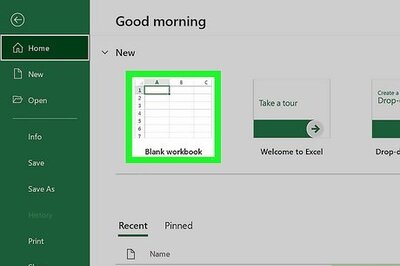






Comments
0 comment